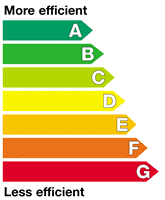 Energy saving is the practice of using an amount of energy required and turning Energy Savings off energy when not in use. This results in decreasing bills, helping the environment,and home comfort. People and business’s that are direct users of energy may want to conserve energy to keep energy costs down and promote economic,and environmental sustainability. Business users may want to increase efficiency to help maximize profit.
Energy saving is the practice of using an amount of energy required and turning Energy Savings off energy when not in use. This results in decreasing bills, helping the environment,and home comfort. People and business’s that are direct users of energy may want to conserve energy to keep energy costs down and promote economic,and environmental sustainability. Business users may want to increase efficiency to help maximize profit.
Energy Savings
Energy savings reduces the amount of energy used and energy needed per house hold. This helps lowering the energy supply needed to keep up with population growth. This reduces the price in energy, and can reduce the need for new power plants, and importing energy from abroad. The reduced energy demand can provide more flexibility in choosing the most preferred methods of energy production like renewable energy.
By reducing emissions, home energy savings is an important part of lowering climate change. Energy savings at home helps the replacement of non-renewable resources like oil and gas with renewable energy. Energy savings is often the most economical solution to energy shortages, and is a more environmentally alternative to increased energy production.
Energy usage in the transportation and residential sectors is largely controlled by the domestic consumers. Commercial and industrial energy expenditures are controlled by businesses and other facility managers. Policy on national energy has a effect on the amount of energy usage.
The oil supply crises of the 1970s spurred the creation, in 1975, of the federal Corporate Average Fuel Economy (CAFE) program, which required car makers to meet over time higher fleet fuel economy targets. The next 10 years saw dramatic improvements in fuel economy, mostly the result of making smaller vehicles and weight. In 1990 this slowed dramatically due to the growing popularity of sport utility vehicles or SUV’s, pickup trucks and minivans, which fall under the more lenient “light truck” CAFE standard.
The oil supply crises of the 1970s spurred the creation, in 1975, of the federal Corporate Average Fuel Economy (CAFE) program, which required auto manufacturers to meet progressively higher fleet fuel economy targets.
The next decade saw dramatic improvements in fuel economy, mostly the result of reductions in vehicle size and weight. These gains eroded somewhat after 1990 due to the growing popularity of sport utility vehicles, pickup trucks and minivans, which fall under the more lenient “light truck” CAFE standard.
